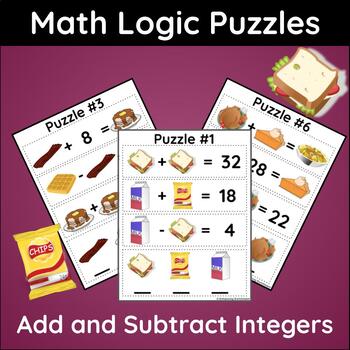Math Logic Puzzles, Integer, Negative Number Problems for Gifted and Talented
- PDF
Also included in
- You will love these Logic Puzzles – the ultimate brain-teasing tool designed to engage and challenge high-achieving students who crave an extra mental workout. These meticulously crafted puzzles transcend traditional mathematics exercises, seamlessly blending math problem solving with critical thinkPrice $12.60Original Price $18.00Save $5.40
Description
You will love these Integer Logic Puzzles – the ultimate brain-teasing tool designed to engage and challenge high-achieving students who crave an extra mental workout. These meticulously crafted puzzles transcend traditional mathematics exercises, seamlessly blending negative numbers with critical thinking. With varying levels of complexity, they offer a compelling avenue for early finishers to delve into, encouraging them to explore the intricate web of numbers, operations, and algebra. These puzzles empower young minds to sharpen their problem-solving skills while having a blast. Then, elevate classroom dynamics and foster a culture of intellectual curiosity by having students create their own challenging negative number puzzles using the puzzle templates.
Focus:
- Math
- Integer Equations
- Problem Solving
- Critical Thinking
Includes:
- Title Page
- 12 Puzzles
- Answer Recording Sheet
- 3 Puzzle Templates
- 3 Puzzle Template Cut Outs
- Puzzle Template Rubric
- 3 Condensed Puzzle Pages
- Full Answer Key
Other Logic Puzzles Available:
Addition and Subtraction Logic Puzzles
Multiplication and Division Logic Puzzles
Addition and Subtraction Fraction Logic Puzzles
Multiplication and Division Fraction Logic Puzzles
Follow Enhancing Enrichment. All new products are half off for the first 48 hours.






